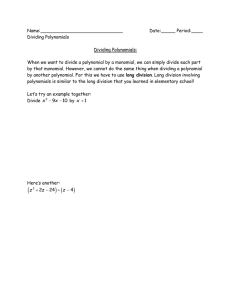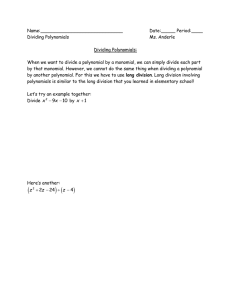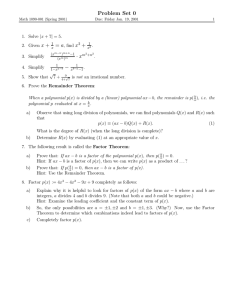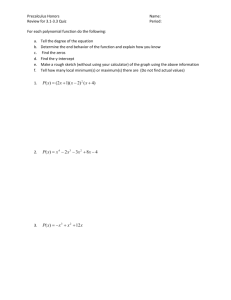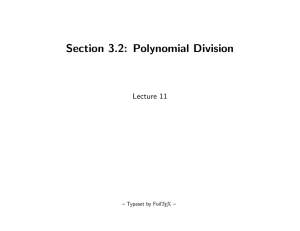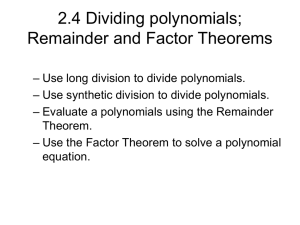2.3 Finding the Other Zeros of Polynomials
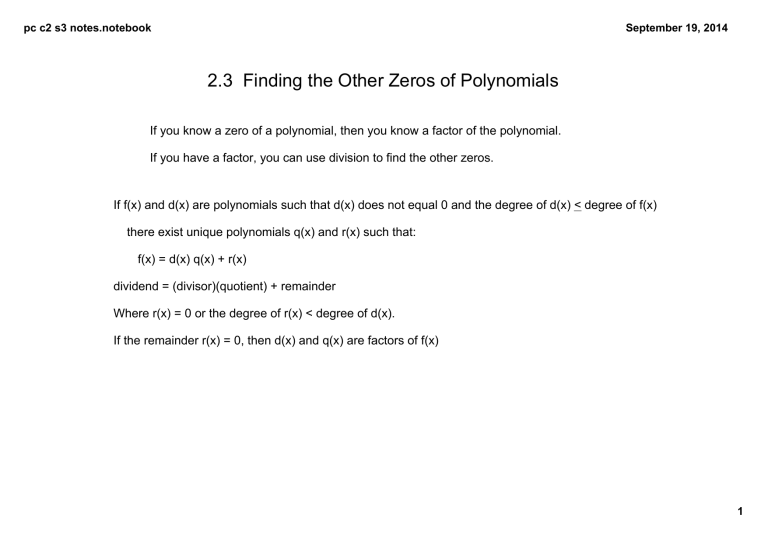
pc c2 s3 notes.notebook
September 19, 2014
2.3 Finding the Other Zeros of Polynomials
If you know a zero of a polynomial, then you know a factor of the polynomial.
If you have a factor, you can use division to find the other zeros.
If f(x) and d(x) are polynomials such that d(x) does not equal 0 and the degree of d(x) < degree of f(x)
there exist unique polynomials q(x) and r(x) such that: f(x) = d(x) q(x) + r(x) dividend = (divisor)(quotient) + remainder
Where r(x) = 0 or the degree of r(x) < degree of d(x).
If the remainder r(x) = 0, then d(x) and q(x) are factors of f(x)
1
pc c2 s3 notes.notebook
Use long division only when you have to. There is a quicker way to divide IF you are dividing by a function of the form can be done using synthetic division (must use place holders) a b c d
September 19, 2014
2
pc c2 s3 notes.notebook
(5 x 3 + 18 x 2 + 7x 6) / (x + 3)
(5 x 3 + 6 x + 8) / (x + 2)
September 19, 2014
3
pc c2 s3 notes.notebook
Remainder Theorem: If a polynomial f(x) is divided by x k, the remainder is r = f(k)
Factor Theorem: A polynomial f(x) has a factor x k, if and only if f(k) = 0
September 19, 2014
Given is a factor of find all the zeros of f(x)
Find all the factors of
4

